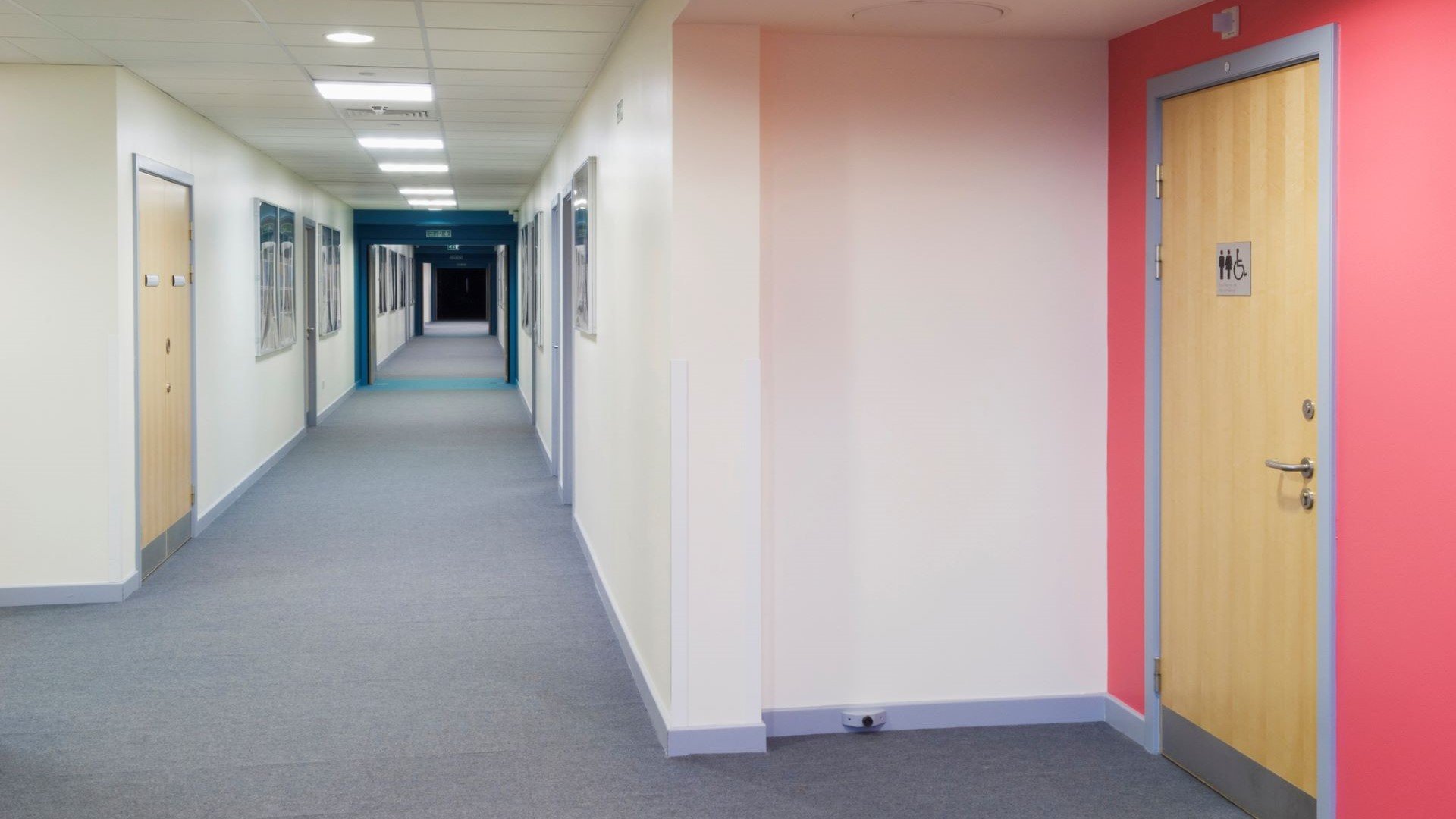School Bathroom Safety

News reports documenting K-12 school bathroom vandalism and other misbehavior highlight the need for enhanced bathroom safety considerations. Because bathrooms are one of the few school locations that allow students privacy, they’ve historically been locations for students to get into unobserved trouble.
K-12 school administrators regularly contend with illicit student bathroom activity including:
- Drug and alcohol use
- Smoking
- Physical assaults
- Sexual abuse
- Bullying
- Sexual encounters
Several trends have made it even harder for schools to ensure student bathroom safety. Social media videos encouraging students to vandalize bathrooms and capture the destruction on camera increased the amount of damage. Vaping’s popularity means students are often less obvious when ingesting tobacco and marijuana. Additionally, the prevalence of COVID-19 and RSV make bathroom hygiene particularly important. And some state laws are making it difficult for students to use bathrooms that align with their gender identity.
Schools are stuck between a rock and a hard place. How can you increase student bathroom safety while protecting student privacy?
Bathroom Structure and Monitoring
Bathroom design and materials can help prevent misuse, encourage safe practices, and ensure students are comfortable using bathroom facilities. When building or renovating bathroom spaces, always follow Americans with Disabilities Act (ADA) accessibility standards to ensure bathrooms are accessible for people with disabilities.
Also consider these recommendations:
- Install touchless fixtures to limit hand-to-surface contact that can spread germs.
- Install sturdy and seamless sinks that are harder to vandalize.
- Install sturdy toilet partitions that are less susceptible to vandalism and graffiti.
- Increase access to single-use, gender-neutral (inclusive) restrooms (at least one per floor). Some advantages of these bathrooms include removing the gender identification requirement for using the bathroom, enhancing a bathroom monitor’s ability to check the toilet area between uses, and limiting the ability for multiple students to congregate in private.
Appropriately monitoring school bathrooms while still providing student access and privacy can be a tricky balance. New technology solutions may help schools better navigate that balance.
Some schools are implementing:
- Air quality monitors that include vaping and cigarette smoke sensors
- Occupancy sensors (especially for single-use restrooms)
These solutions monitor bathrooms without recording audio or video and can help deter or detect inappropriate behavior. For an example of a district implementing non-invasive technology, see Loudon County (Va.) Public Schools’ bathroom technology project.
Policies and Practices
The law regarding school bathroom use by transgender students is currently in flux. Several states have laws designating the use of school bathrooms based on a person’s assigned sex at birth. Appellate courts are split on whether a school bathroom policy prohibiting a transgender student from using bathroom facilities consistent with their gender identity violates Title IX.
When updating your school’s bathroom use policy, consult legal counsel to determine the applicable law in your state.
For all students, it’s important to provide clean, functional bathrooms to encourage student respect for the space. Recommended bathroom policies and practices include:
- Maintain a regular cleaning schedule.
- Create a reporting system for bathroom malfunctions and vandalism that includes a quick response team.
- Provide sufficient bathroom supplies including menstrual products, toilet paper, soap, and a means to dry hands (electric dryers, paper towels, etc.).
- Keep bathrooms open and available throughout the day.
- When allowed by law, state that students are allowed to use the bathroom most closely aligned with their gender identity.
- If your school experiences repeated incidents in bathrooms, assign a monitor to sit outside the bathroom who can immediately report and respond to problems. Monitors should periodically physically check the bathrooms during the day while they are not in use, especially following periods of high use such as lunch or class changes, and respond to any problems, such as low supplies or vandalism. Train the monitor on the school’s bathroom policy and incident response mechanisms.
- To prevent bathroom opioid overdoses, train bathroom monitors on the availability and use of Naloxone (sometimes known as Narcan), a drug that can stop or reverse effects of an opioid overdose.
Training
Teach students appropriate bathroom behavior through repeated reminders or an established curriculum (such as in a health or wellness class). Reinforce the lessons through signage.
Training should include:
- How and why to keep bathrooms clean
- Handwashing guidance (for example, see this guidance from the Centers for Disease Control and Prevention (CDC))
- School bathroom policy overview
- How to report bathroom problems and incidents, such as broken facilities and harassment
- Sanctions for violating your school bathroom policy
The CDC provides printable handwashing signage to post in bathrooms and hallways.
Additional Resources
Bradley Corp: Durable School Restroom Design
One Point Partitions: Best Bathroom Stalls for Schools
About the Author
-

Melanie Bennett, Esq., ARM-E
Senior Risk Management Counsel
In her role on UE’s Risk Research team, Melanie dives into timely topics affecting education. Her areas of expertise include protecting minors, enterprise risk management (ERM), technology accessibility, and athletics. Prior to joining UE, she interned at the U.S. Department of Education’s Office for Civil Rights. Melanie serves on the Higher Education Protection Network’s (HEPNet’s) Board of Directors.





